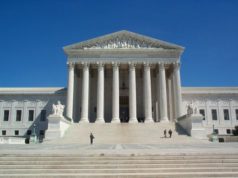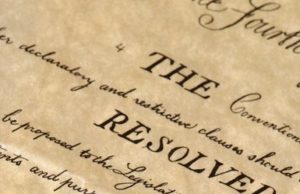Table of Contents
- 1 The First Affirmative Action Decision: Regents of the University of California v. Bakke (1978)
- 2 The Second Affirmative Action Decision: Grutter v. Bollinger (2003)
- 3 The Third Affirmative Action Decision: Fisher v. University of Texas at Austin (2016)
- 4 Implications of Supreme Court Affirmative Action Decisions
- 5 Conclusion

Affirmative action has been a significant topic of discussion in the United States for decades. It is a policy which seeks to remedy past discrimination by promoting diversity and providing opportunities to historically marginalized groups. One of the most important legal battles surrounding affirmative action has taken place in the Supreme Court of the United States. Over the years, the Supreme Court has issued several landmark decisions on affirmative action that have shaped the landscape of equal opportunity in the United States. In this article, we will explore the supreme court affirmative action decisions and discuss how they relate to the broader issue of affirmative action.
The First Affirmative Action Decision: Regents of the University of California v. Bakke (1978)
Regents of the University of California v. Bakke (1978) was the first Supreme Court case to address the issue of affirmative action in college admissions. The case involved Allan Bakke, a white student who had been rejected from the University of California at Davis medical school twice. Bakke argued that the school’s affirmative action program violated Title VI of the 1964 Civil Rights Act, which prohibited discrimination on the basis of race in federally funded programs.
In a 5-4 decision, the Supreme Court held that the use of racial quotas in college admissions was unconstitutional. However, the Court also held that race could be considered as a factor in admissions decisions in order to promote diversity. The Court’s decision in Bakke established the principle of “diversity as a compelling state interest” and has since been cited in many affirmative action cases.
The Second Affirmative Action Decision: Grutter v. Bollinger (2003)
Grutter v. Bollinger (2003) was another significant affirmative action case in the Supreme Court. The case involved Barbara Grutter, a white student who had applied to the University of Michigan Law School and had been waitlisted. Grutter argued that the school’s affirmative action policy, which gave preference to minority applicants, violated the Equal Protection Clause of the 14th Amendment of the US Constitution.
In a 5-4 decision, the Supreme Court upheld the University of Michigan Law School’s affirmative action policy. The Court held that the policy was narrowly tailored to achieve a compelling interest in promoting diversity. The Court’s decision in Grutter affirmed that diversity in higher education was a legitimate state interest that could justify the use of race in admissions decisions.
The Third Affirmative Action Decision: Fisher v. University of Texas at Austin (2016)
Fisher v. University of Texas at Austin (2016) was another affirmative action case that made its way to the Supreme Court. The case involved Abigail Fisher, a white student who had applied to the University of Texas at Austin and had been denied admission. Fisher argued that the school’s affirmative action policy, which took into account the race of applicants as a factor in admissions decisions, violated the Equal Protection Clause of the 14th Amendment.
In a 4-3 decision, the Supreme Court upheld the University of Texas at Austin’s affirmative action policy. The Court held that the policy was narrowly tailored to achieve a compelling interest in promoting diversity. The Court’s decision in Fisher affirmed that diversity in higher education was still a legitimate state interest and that race-conscious admissions policies could be constitutional.
Implications of Supreme Court Affirmative Action Decisions
The Supreme Court’s affirmative action decisions have had a significant impact on how affirmative action policies are designed and implemented. The Court’s decisions have established that diversity is a compelling state interest that can justify the use of race in admissions decisions. However, the Court has also made it clear that race-conscious policies must be narrowly tailored and cannot use quotas or other numerical targets based on race. Affirmative action policies must also be subject to strict scrutiny, which means that they must be narrowly tailored to achieve a compelling state interest and must use the least restrictive means possible to achieve that interest.
The Supreme Court’s decisions on affirmative action have also had a significant impact on higher education. Colleges and universities have used affirmative action policies to promote diversity and ensure that historically marginalized groups have access to education. However, the use of race in admissions decisions has also been controversial, and many critics argue that affirmative action policies amount to reverse discrimination against white students.
Some experts argue that the Supreme Court’s affirmative action decisions have not gone far enough in addressing the issue of racial inequality in the United States. They argue that affirmative action policies should be more aggressive in promoting diversity and that the Court’s decisions have set the bar too high for affirmative action policies to be effective.
Conclusion
Affirmative action has been one of the most contentious issues in American society for decades. The Supreme Court has issued several landmark decisions that have shaped the landscape of equal opportunity in the United States. The Court’s decisions have established that diversity is a compelling state interest that can justify the use of race in admissions decisions. However, the Court has also made it clear that affirmative action policies must be narrowly tailored and cannot use quotas or other numerical targets based on race.
Despite the controversy surrounding affirmative action, most Americans support the idea of using affirmative action to promote diversity and equal opportunity. The Supreme Court’s affirmative action decisions have had a profound impact on higher education and the broader issue of race relations in the United States. As the country continues to grapple with issues of racial inequality and discrimination, the legacy of the Supreme Court’s affirmative action decisions will continue to be felt for years to come.
Affirmative Action was a legislative process that was established with the hopes of providing equal opportunity to minorities. Due to the egregious political, ethical, and human injustices that were suffered by minorities over the course of the history of the United States, the U.S. Supreme Court established the validity of the construct of Affirmative Action in 1964, subsequent to the Civil Rights Act passed in the same year.
The precepts set forth in the 1964 Civil Rights Act constituted the end of discrimination within the United States. However, akin to other renowned, complex rulings by the U.S. Supreme Court, Affirmative Action has been the subject of massive amounts of scrutiny. On the one hand, Affirmative Action is regarded as a long overdue institution of civil rights to minorities in the wake of centuries of prejudice, discrimination, and racism endured by them. On the other hand, those who oppose Affirmative Action view it as ironic overcompensation, awarding of preferential treatment in lieu of past discrimination. In the 1978 case of Regents vs.
The University of California, a case which disputed Affirmative Action, was brought before the U.S. Supreme Court. Bakke, a white male, had been denied acceptance to the medical school of the University of California, an educational institution which had been upholding the policies of Affirmative Action. However, upon further investigation, Bakke discovered the existence of countless minorities enrolled in the medical program whose credentials for acceptance were far inferior to his. As a result, he brought his case to be heard by the U.S. Supreme Court. He maintained that due to the parameters of Affirmative Action, as a white male he had become the victim of discrimination.
The U.S. Supreme Court ruled in favor of Bakke, explaining that race, not achievement, had set the guidelines for acceptance, which was ruled as unconstitutional. Almost immediately, lobbyists on both sides of the debate regarding Affirmative Action argued feverishly on behalf of their respective positions. Advocates for the Affirmative Action program maintained that due to a myriad of opportunities denied to them, minorities were indeed entitled to preferential treatment. The opponents of Affirmative Action labeled its practice as the utilization of an innately unconstitutional praxis in order to rectify a past unconstitutional praxis. In addition, they explained that Caucasian individuals should not be punished for the reprehensible actions of their predecessors. In 1997, under Proposition 209 established by the California Supreme Court, the State of California banned Affirmative Action, claiming that it was a practice that allowed for the allowance of superior treatment to minorities, which were listed to include anyone that is not considered to be a Caucasian male.



























